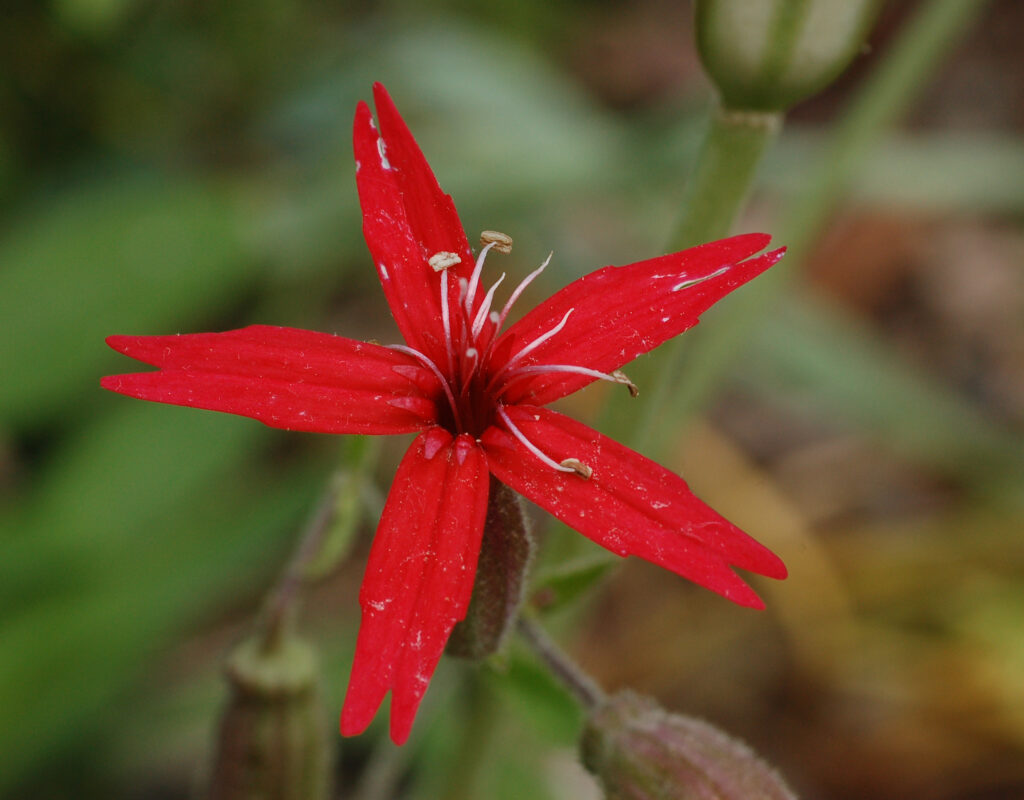Silene Virginica, commonly known as Fire Pink, is a captivating wildflower native to the United States. Its vibrant red flowers and delicate form make it a favorite among garden enthusiasts and nature lovers alike.
Natural Habitat and Growth
Fire Pink thrives in well-drained soils, often gracing the edges of woodlands and open meadows. Its preference for partial shade makes it a versatile addition to various garden settings. For those looking to start a flower garden, Fire Pink can be an excellent choice to introduce color and attract pollinators.
The wildflower’s natural habitat spans across the eastern United States, from the southern parts of New York to Florida’s northern regions. It’s not uncommon to spot Fire Pink on rocky slopes, forest clearings, or along the banks of serene streams.
Garden Companions
When planted alongside other wildflowers, Fire Pink can create a mesmerizing display. Consider transforming a section of your lawn into a wildflower meadow, where Fire Pink can shine alongside other native beauties such as the Black-eyed Susan, Purple Coneflower, and Goldenrod.
The complementary colors and varying heights of these wildflowers can create a dynamic visual experience, turning any garden into a natural work of art.
Cultivation and Care
While Fire Pink is relatively low-maintenance, ensuring the right soil conditions and moisture levels will guarantee a thriving plant. Regular watering during dry spells and a layer of mulch can help retain soil moisture. It’s essential to avoid waterlogged conditions, as this can hinder the plant’s growth.
Fire Pink seeds can be sown directly into the garden during the fall. They require a cold stratification period to germinate successfully. Once established, the plant can spread through self-seeding, creating a more abundant display year after year.
Incorporating Fire Pink in Garden Designs
Fire Pink’s striking color can be a focal point in garden designs. Whether you’re planning a dedicated flower garden or a mixed vegetable and flower garden, the Fire Pink can seamlessly fit in, offering both aesthetic appeal and functional benefits.
Its vibrant hue can be paired with softer pastel-colored flowers for a harmonious look or with contrasting colors for a more dramatic effect. Incorporating Fire Pink near garden pathways or seating areas can also draw attention and create a sense of wonder.
Ecological Benefits
Beyond its beauty, Fire Pink plays a crucial role in local ecosystems. Its tubular flowers are specially adapted to attract hummingbirds, which are its primary pollinators. As these agile birds hover and sip nectar, they facilitate the plant’s pollination process, ensuring the continuation of the species.
By planting Fire Pink in your garden, you’re not only enhancing its beauty but also supporting local wildlife, particularly hummingbirds. This mutual relationship between the plant and its pollinators is a testament to nature’s intricate balance.
Historical and Cultural Significance
Throughout history, wildflowers like the Fire Pink have held cultural and medicinal significance for indigenous communities. While primarily appreciated for its aesthetic value today, it’s essential to recognize and respect the deep-rooted connections such plants have with human history.
Conclusion
Silene Virginica’s Fire Pink is more than just a pretty face. Its resilience, adaptability, radiant beauty, and ecological significance make it a must-have for gardens aiming for a touch of wild elegance. Whether you’re a seasoned gardener or just starting out, the Fire Pink promises to be a delightful addition to your green space, bridging the gap between cultivated gardens and the wild beauty of nature.

